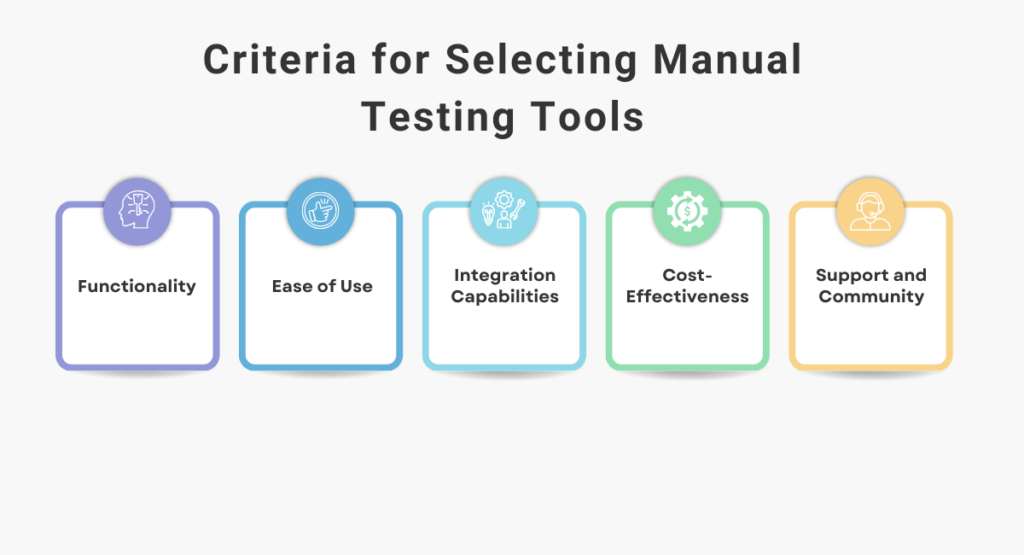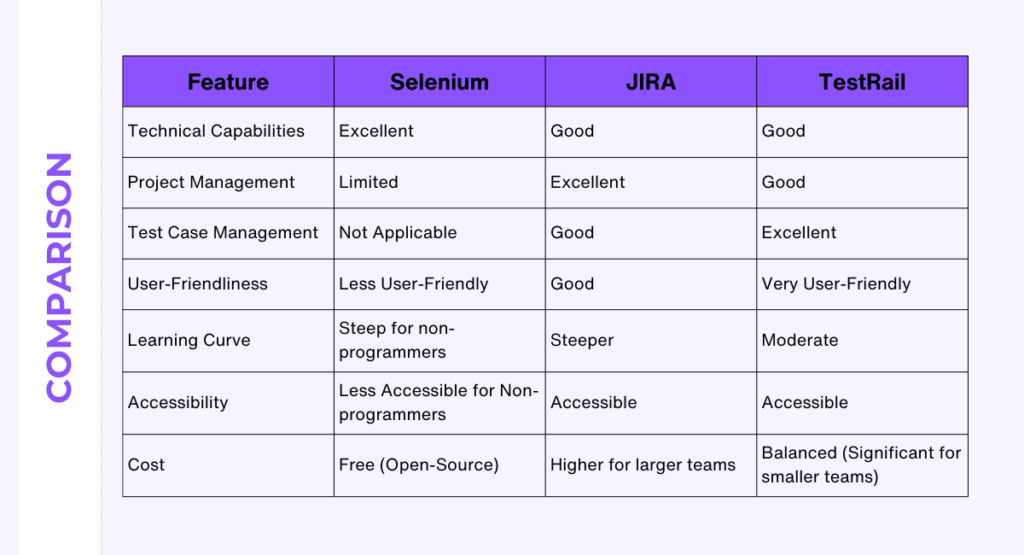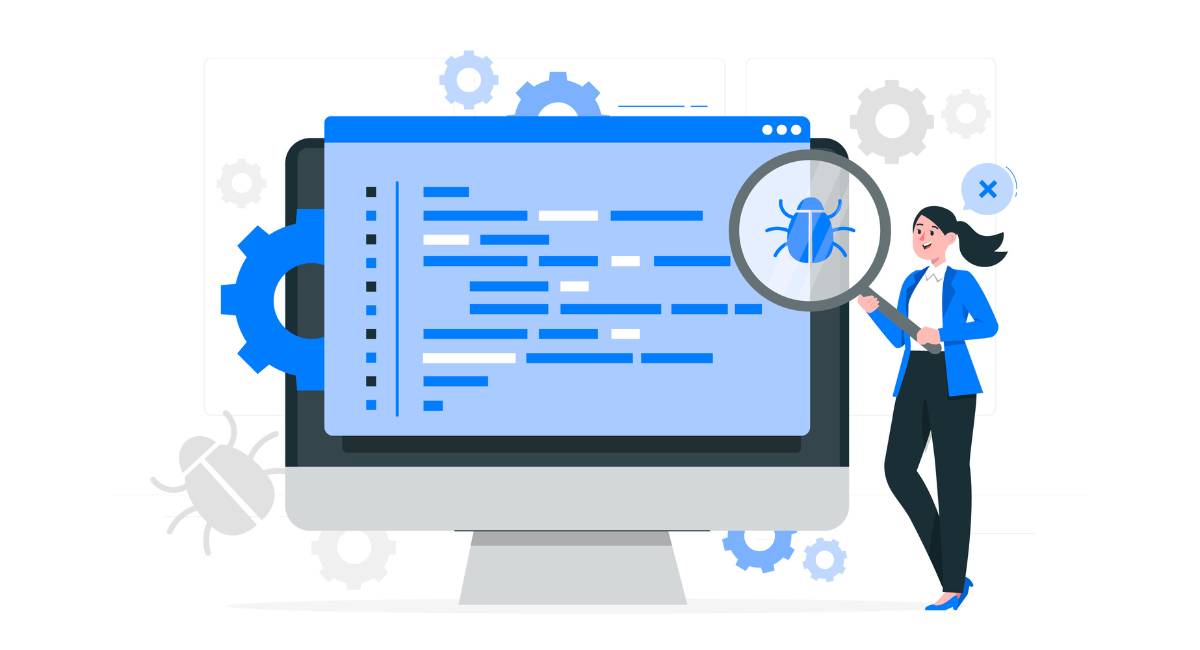Manual testing remains a vital component in the software development lifecycle, despite the growing popularity of automated testing. It plays a crucial role in identifying and resolving issues that automated tests might overlook, especially those related to user experience and interface quirks.
Let's cut through the maze of available manual testing tools, helping you select the ones best suited to your specific project requirements and team dynamics.
To navigate the landscape of manual testing tools effectively, it's crucial to understand the specific needs and requirements of your project.
Factors such as the type of application, testing methodology, and budget play a significant role in selecting the right tools for the job.
Criteria for Selecting Manual Testing Tools
To understand the importance of choosing the right tool, it's essential to briefly revisit the evolution of manual testing tools. Over the years, these tools have transformed significantly.
Initially, manual testing was predominantly about executing test cases manually without any tool assistance.
However, as technology advanced, tools emerged that not only helped in managing test cases and reporting but also in enhancing the efficiency and effectiveness of manual testing processes.
This evolution has led to a diverse range of tools, each offering unique features and benefits. This blog aims to demystify this landscape, making it easier for you to choose the tool that aligns best with your testing needs.
Selecting the right manual testing tool is a multifaceted decision that hinges on several crucial criteria. Understanding these criteria can lead to a more informed and effective choice, significantly impacting the success of your testing efforts.

Functionality
The foremost criterion is the range of features and functionalities a tool offers. A good manual testing tool should cover a wide array of testing needs such as test case creation, management, execution tracking, and defect tracking.
Advanced functionalities might include options for collaboration among team members, customizable workflows, and detailed reporting capabilities. These features not only streamline the testing process but also enhance the overall efficiency of the testing team.
Ease of Use
User-friendliness is paramount. A tool with an intuitive interface reduces the learning curve and helps testers to focus more on testing rather than struggling with the tool itself.
Tools that are easy to navigate, with clear documentation and a user-friendly interface, encourage higher productivity and better adoption among team members.
Integration Capabilities
In today’s interconnected technological landscape, the ability of a Manual Testing Tools to integrate seamlessly with other tools and systems (like issue tracking systems, continuous integration tools, and version control systems) is vital.
This integration capability facilitates a more streamlined and automated workflow, allowing for a more cohesive and efficient testing process.
Cost-Effectiveness
The cost of a Manual Testing Tools is a significant consideration, especially when dealing with different sizes of projects. For smaller projects or teams with limited budgets, it's essential to find a Manual Testing Tools that offers the necessary functionality at a reasonable cost.
For larger projects, investing in a more comprehensive Manual Testing Tools might be more beneficial in the long run, despite a higher initial cost.
Support and Community
Lastly, the availability of good support and an active user community is invaluable. A responsive support team can significantly reduce downtime and improve efficiency, while an active community provides a platform for sharing best practices, troubleshooting, and gaining insights from fellow professionals.
This aspect is often overlooked but can be a deciding factor in how smoothly a Manual Testing Tools can be adopted and used effectively.
Top Manual Testing Tools

Tool 1: Selenium
Selenium is a widely recognized Manual Testing Tools in the realm of manual and automated testing. Primarily known for its automation capabilities, it also supports manual testing efforts, particularly for web applications.
Features:
Selenium stands out for its flexibility and compatibility with multiple programming languages, browsers, and operating systems. It allows testers to write scripts in languages like Java, C#, Python, and Ruby. Selenium WebDriver enables direct calls to the browser, enhancing test accuracy and efficiency. Additionally, Selenium Grid facilitates parallel test execution.
Pros:
- Versatile language support and browser compatibility.
- Open-source and free, which is ideal for budget-conscious projects.
- A large and active community, ensuring robust support and continuous improvement.
- Integration-friendly with a variety of frameworks and tools.
Cons:
- Requires programming knowledge, which might not suit all manual testers.
- Lacks built-in reporting and management features, often necessitating additional tools or integrations.
- Can be complex to set up and maintain, especially for beginners.
Tool 2: JIRA
Though primarily known as a project management tool, JIRA also offers substantial support for manual testing processes.
Features:
JIRA excels in issue tracking and project management, making it a suitable Manual Testing Tools for managing manual testing workflows. It allows for creating and tracking bugs, tasks, and user stories, and offers customizable workflows. JIRA's dashboard and reporting features provide excellent visibility into the testing process.
Pros:
- Highly customizable to suit various project needs.
- Strong integration capabilities with other tools, including Confluence and Bitbucket.
- Offers detailed reporting and tracking features.
- Widely used, ensuring a broad user base and community support.
Cons:
- Can be overwhelming due to its extensive features, requiring time to learn and adapt.
- More expensive compared to some other tools, especially for larger teams.
- Primarily a project management tool, so some testing-specific features might be limited.
Tool 3: TestRail
TestRail is a test case management tool tailored for manual testing.
Features:
TestRail provides comprehensive test case management capabilities, including test planning, execution tracking, and results reporting. It supports various types of testing, from functional to automated, and integrates well with issue tracking and automation tools.
Pros:
- Intuitive and user-friendly interface, suitable for all levels of testers.
- Robust reporting and analytics features.
- Excellent integration capabilities with tools like JIRA and Selenium.
- Offers both cloud-based and on-premise solutions.
Cons:
- Cost can be a factor for smaller teams or individual users.
- While versatile, it might offer more features than necessary for very simple testing scenarios.
Comparison

- Features: Selenium excels in its technical capabilities and flexibility, while JIRA offers robust project management features. TestRail, on the other hand, focuses on comprehensive test case management.
- Usability: TestRail leads in terms of user-friendliness, with its intuitive interface. JIRA, while powerful, has a steeper learning curve. Selenium requires technical know-how, making it less accessible for non-programmers.
- Cost: Selenium is free and open-source, making it cost-effective for any project size. JIRA's pricing can be on the higher side, especially for larger teams. TestRail offers a balanced cost but may still be a significant investment for smaller teams.
Use Cases Implementing Manual Testing
Selenium in E-commerce:
A leading e-commerce company used Selenium for its web application testing. The tool's ability to simulate various browsers and devices was crucial in ensuring a seamless shopping experience across different platforms.
By leveraging Selenium’s automation capabilities alongside manual testing, the company significantly reduced its testing time and costs, while improving the reliability and performance of its web platform.
JIRA in Software Development:
A software development firm integrated JIRA into its project management and testing processes. JIRA’s issue tracking and project management features enabled the team to effectively coordinate tasks and track progress.
The tool's customizable workflow aligned perfectly with the firm's agile methodologies, leading to improved team collaboration and more efficient bug tracking and resolution.
TestRail in Healthcare IT:
A healthcare IT company adopted TestRail for managing its complex testing requirements. TestRail’s test case management and reporting capabilities allowed the company to maintain stringent quality standards required in healthcare applications.
The tool facilitated better organization of test cases, clear documentation, and efficient tracking of test results, contributing to the successful deployment of robust and reliable healthcare software solutions.
Book a Demo and experience ContextQA testing tool in action with a complimentary, no-obligation session tailored to your business needs.
Manual testing remains an integral part of the software testing process, providing a valuable layer of validation and ensuring the quality and reliability of software products.
By carefully evaluating project requirements, considering current trends, and adopting a collaborative approach, teams can effectively select and utilize the best manual testing tools to achieve their testing goals.
You may also be interested in: Guaranteed Browser Compatibility: 8 Must-Have Cross-Browser Testing Tools for 2024
